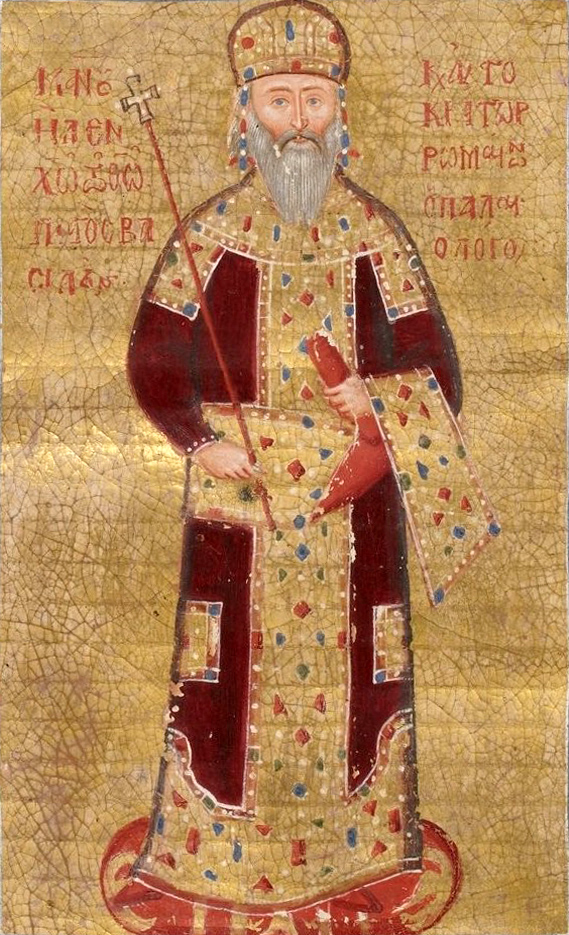 W
WMatthew Blastares was a 14th-century Byzantine Greek monk in Thessalonica and early scholarly opponent of reconciliation with Rome. He was also the writer of the Syntagma Canonum.
 W
WManuel Chrysoloras was a pioneer in the introduction of Greek literature to Western Europe during the Late Middle Ages.
 W
WDemetrius Triclinius, a native of Thessalonica, was a Byzantine scholar who edited and analyzed the metrical structure of many texts from ancient Greece, particularly those of Aeschylus, Sophocles and Euripides. He is often compared favorably with two contemporary annotators of ancient Greek texts, Thomas Magister and Manuel Moschopulus. He also had knowledge of astronomy.
 W
WJohn VI Kantakouzenos, Cantacuzenus, or Cantacuzene was a Greek nobleman, statesman, and general. He served as grand domestic under Andronikos III Palaiologos and regent for John V Palaiologos before reigning as Byzantine emperor in his own right from 1347 to 1354. Deposed by his former ward, he was made to retire to a monastery under the name Joasaph Christodoulos and spent the remainder of his life as a monk and historian. At age 90 or 91 at his death, he was the longest living of the Roman emperors.
 W
WNicholas Kabasilas or Cabasilas was a Byzantine mystic and theological writer.
 W
WJohn Koukouzelis or Jan Kukuzeli was a Byzantine medieval Orthodox Christian composer, singer and reformer of Eastern Orthodox music. He was recognized as a saint by the Eastern Orthodox Church after his death. His music is held in high esteem by Albanians, Bulgarians, Greeks, Macedonians, Romanians and Serbs.
 W
WTheodore Metochites was a Byzantine Greek statesman, author, gentleman philosopher, and patron of the arts. From c. 1305 to 1328 he held the position of personal adviser (mesazōn) to emperor Andronikos II Palaiologos.
 W
WGeorgius Pachymeres was a Byzantine Greek historian, philosopher and miscellaneous writer.
 W
WManuel II Palaiologos or Palaeologus was Byzantine Emperor from 1391 to 1425. Shortly before his death he was tonsured a monk and received the name Matthew. His wife Helena Dragaš saw to it that their sons, John VIII Palaiologos and Constantine XI Palaiologos, become emperors.
 W
WGregory Palamas was a Byzantine Greek prominent theologian and ecclesiastical figure of the late Byzantine period. A monk of Mount Athos and later archbishop of Thessaloniki, he is famous for his defense of hesychast spirituality, the uncreated character of the light of the Transfiguration, and the distinction between God's essence and energies. His teaching unfolded over the course of three major controversies, (1) with the Italo-Greek Barlaam between 1336 and 1341, (2) with the monk Gregory Akindynos between 1341 and 1347, and (3) with the philosopher Gregoras, from 1348 to 1355. His theological contributions are sometimes referred to as Palamism, and his followers as Palamites.
 W
WNikephoros Kallistos Xanthopoulos, Latinized as Nicephorus Callistus Xanthopulus, of Constantinople, the last of the Greek ecclesiastical historians.